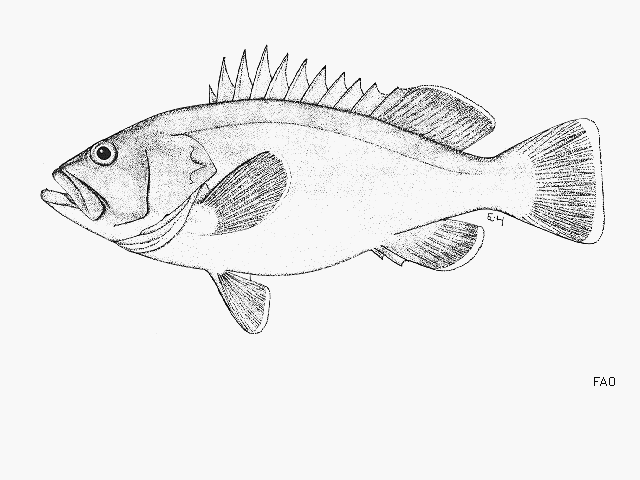| Epinephelidae (Groupers) |
| 157 cm TL (male/unsexed); max.weight: 66 kg |
|
demersal; marine; depth range 15 - 370 m |
| Southwest Pacific: off the eastern coast of Australia. |
|
Dorsal spines (total): 11-11; Dorsal soft rays (total): 14-15; Anal spines: 3-3; Anal soft rays: 9-10. Distinguished by the following characteristics: juveniles, pale brown with 7 broad dark bars, last covering most of caudal peduncle, upper half is black; prominent black maxillary streak; dark brown median and pelvic fins; translucent pectoral fins; adults pinkish gray in color, with or without dark bars; fins darker than body with white margins; depth of body contained 2.6-2.9 times in SL; head length 2.4-2.6 times in SL; slightly convex interorbital area and dorsal head profile; subangular preopercle, finely serrate, serrae on rounded corner not enlarged and ventral edge with 1-4 small serrae; almost straight upper edge of operculum; posterior nostrils 2-4 times larger than anterior nostrils; maxilla reaching almost to vertical at rear edge of eye; 2 rows of small teeth on midlateral part of lower jaw (Ref. 89707). |
| Found on the continental shelf and continental slope (Ref. 75154). Inhabits rocky reefs (Ref. 89707). Juveniles are found at depths between 15 and 128 m. Occurrence at lesser depths in the south off New South Wales is probably related to the cooler sea temperature. |
|
Near Threatened (NT); Date assessed: 05 September 2018 (A4bd) Ref. (130435)
|
| harmless |
Source and more info: www.fishbase.org. For personal, classroom, and other internal use only. Not for publication.

